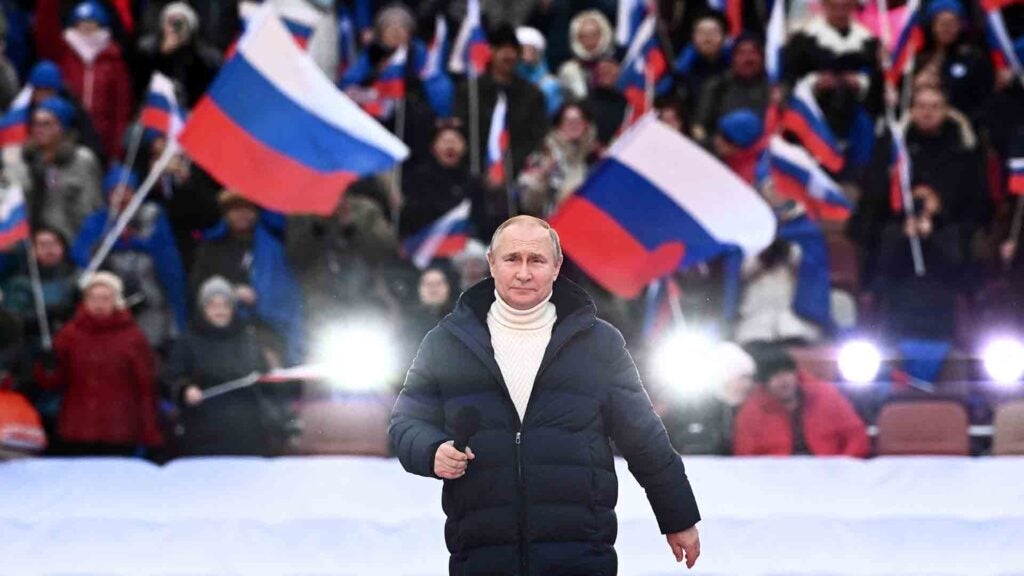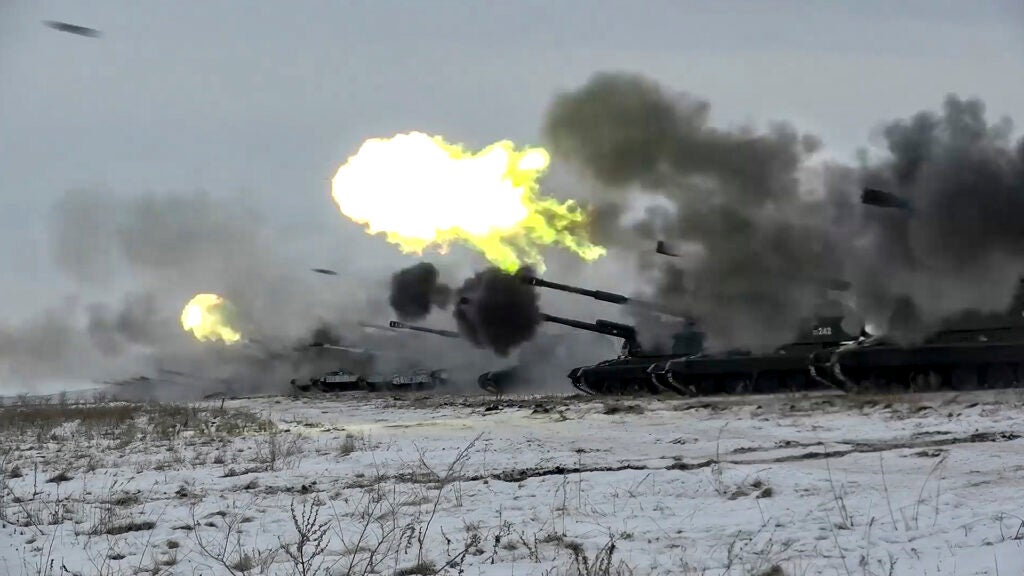In Pentagon jargon, Russia has gone from a “great power competitor” to an “acute threat,” but it’s not yet clear what that means for U.S. service members and their families.
On Monday, Congress received a classified version of the 2022 National Defense Strategy, which keeps China as the Defense Department’s top priority, while Russia runs a close second, according to a fact sheet provided by the Pentagon.
“Russia poses acute threats, as illustrated by its brutal and unprovoked invasion of Ukraine,” the fact sheet says. “We will collaborate with our NATO Allies and partners to reinforce robust deterrence in the face of Russian aggression.”
Get used to hearing Russia being called an “acute threat” by defense officials. The Pentagon has already adopted the new terminology. “As we’ve all seen, Russia remains an acute threat, but China and its ambitions remain our No. 1 challenge,” Defense Department comptroller Michael McCord told reporters on Monday during a news conference.
Yet, defense officials have been to say so far whether the new catchphrase for Russia means that it has become a greater or lesser priority for the Pentagon, or what the difference is between an “acute threat” and a “near-peer competitor,” as military officials had described Russia in the past.
“We describe Russia as an acute threat, not only for its unprovoked and premeditated war in Ukraine, but also its destabilizing actions elsewhere in the world, including Syria,” Pentagon spokesman John Kirby said in a statement to Task & Purpose. “Russia has a track record of territorial aggression and extensive gray zone campaigns against democracies in particular. It is a country without major economic power, and with few allies, particularly in light of its violations of international norms in Ukraine. We view Russia’s threat — which includes nuclear threats to the U.S. and to our allies — as temporal and unpredictable.”
Subscribe to Task & Purpose Today. Get the latest in military news, entertainment, and gear in your inbox daily.
During Tuesday’s Pentagon news briefing, Kirby said it would have been “irresponsible” for the Defense Department to not recognize the unique security threats posed by Russia and explain how the budget request for next fiscal year would help the U.S. military deal with those challenges.
Experts differ on the implications of the Pentagon labeling Russia an acute threat. Nora Bensahel, a noted defense policy expert and political scientist, said she believes the new terminology signals a major shift in U.S. national security policy that recognizes how the threat posed by Russia to the United States and its allies has “risen very significantly” following Russia’s attack on Ukraine.
By describing Russia as an acute threat, the National Defense Strategy conveys “an immediacy and an urgency that hasn’t been there before” about how dangerous Russia is to U.S. interests, Bensahel told Task & Purpose.

“The most recent National Defense Strategy, which was released in 2018, talks broadly about major power competition,” Bensahel said. “More recently, the Pentagon in the past couple of years has talked about China as the ‘pacing threat’ out of those two. But, in the aftermath of Russia’s invasion of Ukraine, it’s very clear that Russia poses a grave threat to its neighbors, some of whom are U.S./NATO allies. So, the United States has to be prepared for the possibility of increasing threats coming from Russia and has to focus particularly on deterring them, especially for our NATO allies.”
But by using the word “acute” to describe the threat posed by Russia, the Pentagon could be implying that it does not consider Russia to be a permanent menace, said Michael Kofman, a Russian military analyst. Russia has gone through cycles of ascendancy and decline, but it has remained a persistent threat, Kofman told Task & Purpose. That’s why both Russia and China should be viewed as “distinct but interrelated challenges.”
“Obviously, China should have first priority,” Kofman said. “But it would be a mistake to put Russia along with other challenges like North Korea and Iran.”

Still, President Joe Biden’s administration initially wanted the 2022 National Defense Strategy to deemphasize the security challenges posed by Russia until Russian President Vladimir Putin ordered his forces to attack Ukraine, said Jonathan Schroden of CNA, a federally funded research and development center.
By adopting the term “acute threat,” the Pentagon may have found a way to keep its focus on China while taking into account Russia’s attack on Ukraine, Schroden told Task & Purpose.
“They clearly wanted to downgrade Russia to a No. 2 spot when they started writing the NDS,” Schroden said. “This to me feels like a bit of backtracking, in terms of: Russia is still clearly less important than China in the framing here, but it’s elevated from where they might have wanted to go. Russia’s invasion forces them to think about Russia more fulsomely than I think they wanted to with this NDS. They really wanted the NDS to be heavily focused on China.”
He noted that the word “acute” itself could be used to describe an issue that has arisen suddenly, and that accurately describes how Russia has become a much more strategically dangerous threat since the invasion of Ukraine.
“The situation is unpredictable,” Schroden said. “I don’t think it’s clear to anybody where this goes from here. If there’s one thing you don’t want between countries with large stockpiles of strategic nuclear weapons, it’s large degrees of unpredictability.”
What’s new on Task & Purpose
Want to write for Task & Purpose? Click here. Or check out the latest stories on our homepage.
